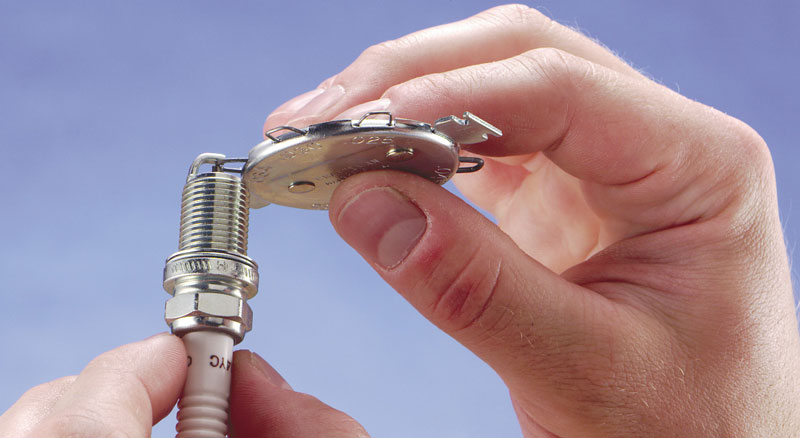How to Change a Spark Plug
For consistent, easy starting, we recommend changing spark plugs every 100 hours or every season on all of your outdoor power equipment engines. Replacing your spark plug:
- Ensures consistent spark
- More reliable starting
- Improves fuel economy
Step 1: Remove existing spark plug
1. Disconnect the spark plug lead. Then, clean the area around the spark plug to avoid getting debris in the combustion chamber when you remove the plug.
2. Remove the spark plug using a spark plug socket.
3. Clean light deposits from the plug with a wire brush and spray-on plug cleaner. Then, use a sturdy knife if necessary to scrape off tough deposits. NOTE: Never clean a spark plug with a shot blaster or abrasives.
4. Inspect the spark plug for very stubborn deposits, or for cracked porcelain or electrodes that have been burned away. If any of these conditions exists, replace the spark plug.
Step 2: Put in new spark plug

1. Use a spark plug gauge to measure the gap between the two electrodes (one straight, one curved) at the tip of your spark plug Many small engines require a .030" gap. Check for the specifications for your model.
2. If necessary, use a spark plug gauge to adjust the gap by gently bending the curved electrode. When the gap is correct, the gauge will drag slightly as you pull it through the gap.
3. Reinstall the plug, taking care not to over-tighten (15 ft. lbs. maximum). Then, attach the spark plug lead.
TROUBLESHOOTING FAQS
View solutions for handling the most common engine and product troubleshooting and maintenance questions.
VIDEOS
Learn about the latest products by Briggs & Stratton, step-by-step instructions on how to locate your lawn mower engine model number and more!


.jpg)
